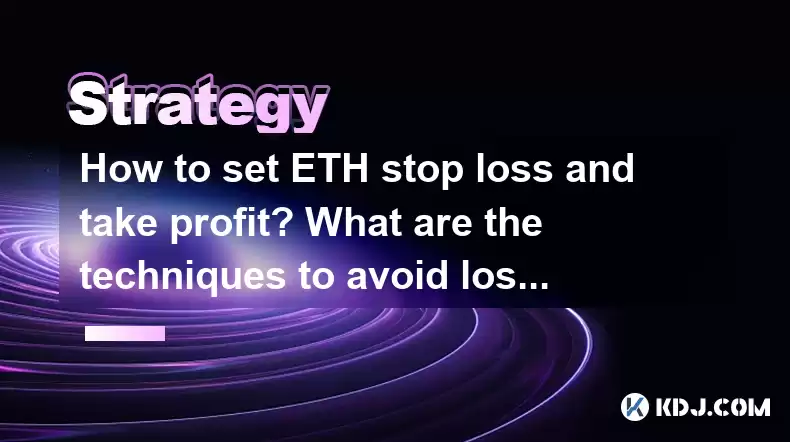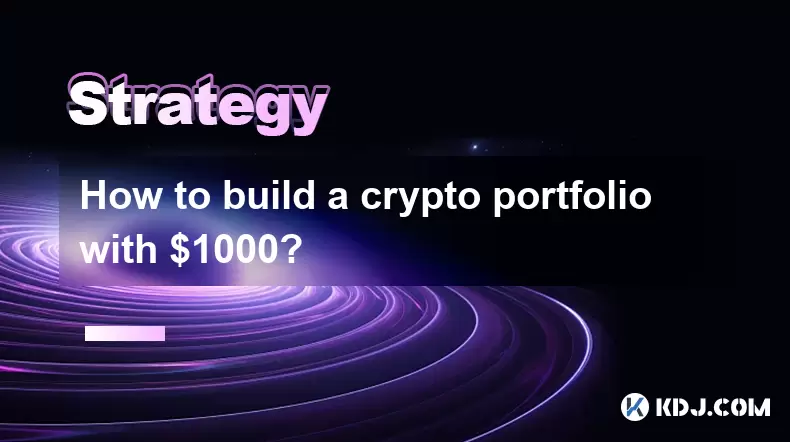-
 Bitcoin
Bitcoin $114400
1.32% -
 Ethereum
Ethereum $3499
2.20% -
 XRP
XRP $2.922
4.26% -
 Tether USDt
Tether USDt $0.0000
0.03% -
 BNB
BNB $752.6
1.53% -
 Solana
Solana $161.8
1.64% -
 USDC
USDC $0.9999
0.01% -
 TRON
TRON $0.3267
1.32% -
 Dogecoin
Dogecoin $0.1991
3.02% -
 Cardano
Cardano $0.7251
3.29% -
 Hyperliquid
Hyperliquid $38.32
3.36% -
 Stellar
Stellar $0.3972
7.58% -
 Sui
Sui $3.437
2.74% -
 Chainlink
Chainlink $16.29
3.65% -
 Bitcoin Cash
Bitcoin Cash $545.3
3.70% -
 Hedera
Hedera $0.2482
7.49% -
 Ethena USDe
Ethena USDe $1.001
0.03% -
 Avalanche
Avalanche $21.40
2.02% -
 Toncoin
Toncoin $3.579
1.56% -
 Litecoin
Litecoin $109.3
2.20% -
 UNUS SED LEO
UNUS SED LEO $8.951
-0.18% -
 Shiba Inu
Shiba Inu $0.00001220
2.75% -
 Polkadot
Polkadot $3.613
2.99% -
 Uniswap
Uniswap $9.173
3.78% -
 Monero
Monero $302.6
2.62% -
 Dai
Dai $0.0000
0.00% -
 Bitget Token
Bitget Token $4.320
1.52% -
 Pepe
Pepe $0.00001048
3.40% -
 Cronos
Cronos $0.1314
4.33% -
 Aave
Aave $259.4
3.54%
How to set ETH stop loss and take profit? What are the techniques to avoid losses?
Setting stop loss and take profit orders for ETH is crucial for managing risk in the volatile crypto market; use exchanges like Binance or automate with trading bots on 3Commas.
Apr 28, 2025 at 06:07 pm

Setting stop loss and take profit orders for Ethereum (ETH) is a critical strategy for managing risk and maximizing potential gains in the volatile cryptocurrency market. This article will guide you through the process of setting these orders and discuss techniques to avoid losses effectively.
Understanding Stop Loss and Take Profit
Stop loss and take profit orders are essential tools for traders looking to manage their investments proactively. A stop loss order is designed to limit an investor's loss on a security position. For example, if you buy ETH at $3,000 and set a stop loss at $2,700, the order will automatically sell your ETH if the price drops to $2,700, thus capping your potential loss. On the other hand, a take profit order is used to lock in profits. If you set a take profit at $3,300, your ETH will be sold automatically when the price reaches this level, ensuring you realize your gains.
Setting Stop Loss and Take Profit on a Crypto Exchange
To set stop loss and take profit orders for ETH, follow these steps on a typical cryptocurrency exchange like Binance or Coinbase Pro:
- Log in to your account on the chosen exchange.
- Navigate to the trading section and select the ETH trading pair you are interested in, such as ETH/USDT.
- Open the order form for the trading pair. Look for options labeled "Stop-Limit" or similar terms.
- Set the stop price for your stop loss. If you bought ETH at $3,000 and want to limit your loss to 10%, set the stop price at $2,700.
- Set the limit price slightly below the stop price to ensure the order is executed. For example, set the limit price at $2,690.
- Enter the amount of ETH you wish to sell at the stop loss.
- Repeat the process for setting a take profit order. Set the stop price at your target profit level, say $3,300, and the limit price slightly below, such as $3,290.
- Review and confirm your orders. Ensure all details are correct before submitting.
Techniques to Avoid Losses
To effectively avoid losses in the cryptocurrency market, consider the following techniques:
Diversification
Diversification is a fundamental strategy to mitigate risk. Instead of putting all your funds into ETH, consider spreading your investment across different cryptocurrencies. This approach can help cushion the blow if the price of ETH drops significantly.
Dollar-Cost Averaging
Dollar-cost averaging (DCA) involves investing a fixed amount of money at regular intervals, regardless of the asset's price. This technique can help reduce the impact of volatility. For instance, if you invest $100 in ETH every week, you will buy more ETH when the price is low and less when the price is high, averaging out your cost over time.
Position Sizing
Position sizing is crucial for managing risk. Determine the percentage of your portfolio you are willing to risk on a single trade. For example, if you decide to risk no more than 2% of your portfolio on any one trade, you will limit your potential losses and protect your overall investment.
Technical Analysis
Technical analysis involves studying historical price data and market trends to make informed trading decisions. By using tools like moving averages, Relative Strength Index (RSI), and Bollinger Bands, you can identify potential entry and exit points for ETH, helping you avoid significant losses.
Using Trading Bots for Automated Stop Loss and Take Profit
Trading bots can automate the process of setting and managing stop loss and take profit orders. Here’s how you can set up a bot on a platform like 3Commas:
- Sign up for an account on 3Commas and connect it to your exchange.
- Create a new bot and select the trading pair you want to trade, such as ETH/USDT.
- Configure the bot with your desired stop loss and take profit levels. For example, set the stop loss at 10% below your purchase price and the take profit at 10% above.
- Set additional parameters like the amount of ETH to trade and any trailing stop loss settings.
- Start the bot and monitor its performance. The bot will automatically execute trades based on your predefined rules.
Monitoring and Adjusting Your Orders
It’s important to monitor and adjust your stop loss and take profit orders regularly. The cryptocurrency market is highly volatile, and what seemed like a safe stop loss level a week ago might not be appropriate today. Consider the following:
- Review your orders daily or at least weekly to ensure they align with current market conditions.
- Adjust your stop loss to break even or a small profit if the price of ETH moves in your favor.
- Use trailing stop loss orders to lock in profits as the price increases. For example, set a trailing stop loss at 5% below the current market price, so it moves up with the price but sells if the price drops by 5%.
Frequently Asked Questions
Q: Can I set stop loss and take profit orders on all cryptocurrency exchanges?
A: Not all cryptocurrency exchanges support stop loss and take profit orders. Major exchanges like Binance, Coinbase Pro, and Kraken offer these features, but it's essential to check the specific capabilities of your chosen exchange.
Q: What is the difference between a stop loss and a stop limit order?
A: A stop loss order becomes a market order once the stop price is reached, selling your asset at the best available price. A stop limit order turns into a limit order at the stop price, selling your asset only at the specified limit price or better. The stop limit order gives you more control over the selling price but carries the risk of not being executed if the price moves too quickly.
Q: How often should I adjust my stop loss and take profit levels?
A: It depends on your trading strategy and the volatility of the market. For highly volatile assets like ETH, daily or weekly adjustments might be necessary to ensure your orders remain effective. However, if you are a long-term investor, you might adjust your orders less frequently, perhaps monthly or quarterly.
Q: Is it possible to set stop loss and take profit orders on decentralized exchanges?
A: Currently, most decentralized exchanges (DEXs) do not support stop loss and take profit orders due to their non-custodial nature. However, some DEXs are beginning to integrate smart contract-based solutions to offer similar functionality. Always check the features of the specific DEX you are using.
Disclaimer:info@kdj.com
The information provided is not trading advice. kdj.com does not assume any responsibility for any investments made based on the information provided in this article. Cryptocurrencies are highly volatile and it is highly recommended that you invest with caution after thorough research!
If you believe that the content used on this website infringes your copyright, please contact us immediately (info@kdj.com) and we will delete it promptly.
- BCUT: Support Holds, Accumulation Hints at Potential Reversal
- 2025-08-04 10:50:12
- Bitcoin's Bullish Expansion: Decoding Bollinger Bands and Whale Bets
- 2025-08-04 10:55:12
- XRP, Solana, and Whales: Decoding the Crypto Tides
- 2025-08-04 11:10:11
- BlockDAG's Grand Finale: Auction Fever and the Dawn of a New Era
- 2025-08-04 10:30:12
- Kaia Files: Will South Korea Embrace a KRW-Pegged Stablecoin?
- 2025-08-04 10:30:12
- Kaspa, HBAR, and Cold Wallet: A New York Minute on Crypto's Latest Moves
- 2025-08-04 09:11:54
Related knowledge

How to avoid common crypto investment mistakes?
Jul 13,2025 at 01:35am
Understanding the Risks of Crypto InvestmentInvesting in cryptocurrency can be highly rewarding, but it also comes with significant risks. One of the ...

What is a long-short crypto strategy?
Jul 15,2025 at 10:56am
Understanding the Basics of a Long-Short Crypto StrategyA long-short crypto strategy is an investment approach where traders simultaneously take long ...

What is a long-short crypto strategy?
Jul 11,2025 at 01:28pm
Understanding the Basics of Long-Short Crypto StrategyA long-short crypto strategy is an investment approach where traders take both long and short po...

How to use the RSI indicator for crypto?
Jul 12,2025 at 03:56pm
Understanding the RSI Indicator in Cryptocurrency TradingThe Relative Strength Index (RSI) is a momentum oscillator used to measure the speed and chan...

Is copy trading a good strategy for crypto beginners?
Jul 12,2025 at 08:28am
Understanding Copy Trading in the Cryptocurrency MarketCopy trading is a strategy where novice traders replicate the trades of experienced investors a...

How to build a crypto portfolio with $1000?
Jul 13,2025 at 08:14pm
Understanding the Basics of Cryptocurrency InvestmentBuilding a crypto portfolio with $1000 starts with understanding the fundamentals of cryptocurren...

How to avoid common crypto investment mistakes?
Jul 13,2025 at 01:35am
Understanding the Risks of Crypto InvestmentInvesting in cryptocurrency can be highly rewarding, but it also comes with significant risks. One of the ...

What is a long-short crypto strategy?
Jul 15,2025 at 10:56am
Understanding the Basics of a Long-Short Crypto StrategyA long-short crypto strategy is an investment approach where traders simultaneously take long ...

What is a long-short crypto strategy?
Jul 11,2025 at 01:28pm
Understanding the Basics of Long-Short Crypto StrategyA long-short crypto strategy is an investment approach where traders take both long and short po...

How to use the RSI indicator for crypto?
Jul 12,2025 at 03:56pm
Understanding the RSI Indicator in Cryptocurrency TradingThe Relative Strength Index (RSI) is a momentum oscillator used to measure the speed and chan...

Is copy trading a good strategy for crypto beginners?
Jul 12,2025 at 08:28am
Understanding Copy Trading in the Cryptocurrency MarketCopy trading is a strategy where novice traders replicate the trades of experienced investors a...

How to build a crypto portfolio with $1000?
Jul 13,2025 at 08:14pm
Understanding the Basics of Cryptocurrency InvestmentBuilding a crypto portfolio with $1000 starts with understanding the fundamentals of cryptocurren...
See all articles

























































































